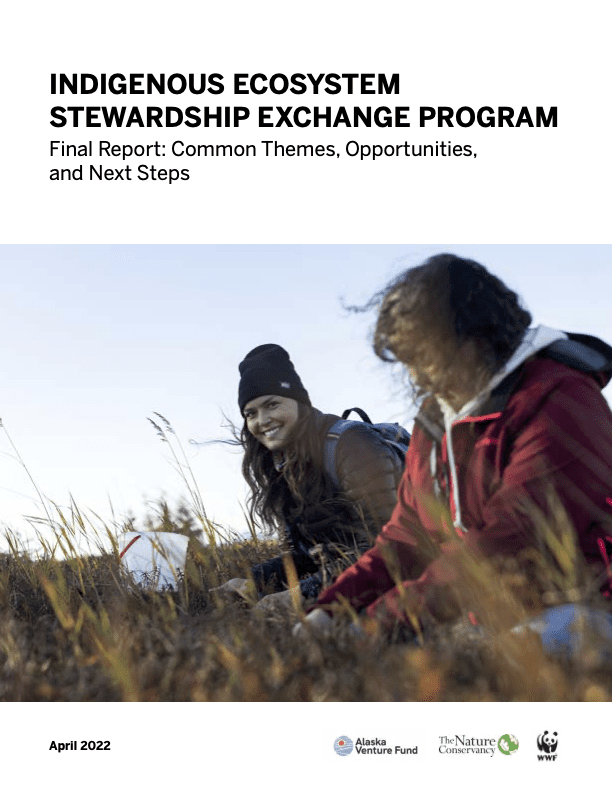Executive Summary
Indigenous-led ecosystem stewardship programs around the world are returning the management and caretaking of traditional lands to the local Indigenous peoples. The United States lags behind other countries in this effort and there is a lot to learn from them to honor Indigenous sovereignty and shift management practices here. From October to December 2021 Alaska Native leaders from Bristol Bay, Bering Strait, and Southeast Alaska gathered virtually with their counterparts from around the world to learn from their experiences and generate ideas for what is possible in Alaska.
Common Themes
Indigenous leaders from around the globe surfaced important shared themes during this program that can guide the work of Alaska Native people as they advance efforts to establish Indigenous-led ecosystem stewardship programs in Alaska.
- Public lands are in fact Indigenous lands
- Consensus from local Tribes and communities as a critical first step
- Ensure Indigenous people have the economic means to thrive on their lands
- Invite federal and state governments to negotiate stewardship priorities on Indigenous terms.
- The ecosystem is only healthy when all components, including the people, are healthy
- Indigenous Guardians programs are critical tosuccessful ecosystem stewardship
- Indigenous languages matter for realizing stewardship and sovereignty
There are clear opportunities for Alaska Native people seeking to have the state and federal governments formally recognize the rightful stewardship of their traditional lands and waters.
- Develop and implement Indigenous Guardians programs that meaningfully co-manage natural resources with state and federal agencies.
- Revisit existing laws where systemically incorporating Indigenous values could positively impact ecosystem stewardship.
- Find consensus for locally-driven solutions.
- Publicly restore Indigenous place names.
- Conduct future exchanges to continue to develop ideas, deepen relationships, and interrogate imposed structures related to Indigenous stewardship.
- Conduct needs assessments for hunting and fishing to inform co-management efforts.
- Show how Indigenous stewardship is a different relationship to the land and water that leads to better outcomes than western conservation.
Participants of this exchange program were drawn from three different regions of Alaska. Each regional team identified potential next steps to advance these conversations in their local geographies.
Bering Strait identified:
- Strengthen marine mammal stewardship by increasing collaboration and integration among the co-management groups operating in the region;
- Use existing regional meetings and conversations to determine and set local priorities; and
- Conduct analysis to determine Indigenous stewardship opportunities in the region.
Bristol Bay identified:
- Create a common vision Alaska Native stewardship in the region;
- Develop leadership to move Indigenous stewardship ideas forward; and
- Restore Alaska Native languages and center organizational cultures on Indigenous values.
Southeast Alaska identified:
- Build capacity at all ages and levels in areas where Alaska Native expertise is needed;
- Develop an intentional focus on healing as a cornerstone of this work; and
- Develop sustainable communities while reclaiming our lands and waters.
We are at an ideal time to prioritize Indigenous values and chart a new course forward for the planet. This is important not only for stewardship opportunities in Alaska, but also for humanity to survive in a rapidly changing climate that is straining our ecosystems and political systems. Indigenous peoples have an opportunity to think big and bold as they determine what is right for their people, lands, and waters.
